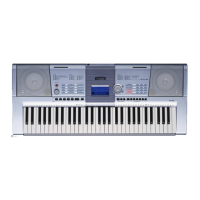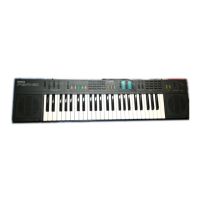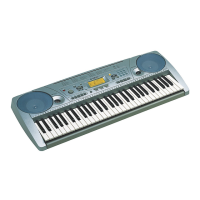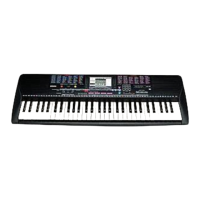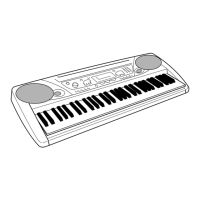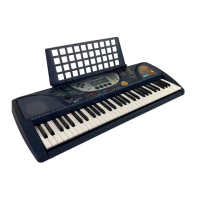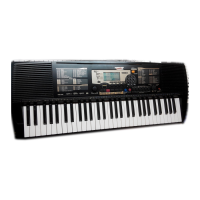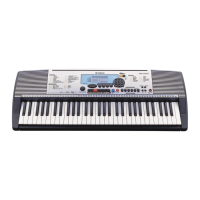MIDI Functions
67
MIDI is an acronym that stands for Musical Instrument Digital Interface, which
allows electronic musical instruments to communicate with each other, by send-
ing and receiving compatible Note, Control Change, Program Change and various
other types of MIDI data, or messages.
The PSR-290 can control a MIDI device by transmitting note related data and var-
ious types of controller data. The PSR-290 can be controlled by the incoming
MIDI messages which automatically determine tone generator mode, select MIDI
channels, voices and effects, change parameter values and of course play the
voices specified for the various parts.
MIDI messages can be divided into two groups: Channel messages and System
messages. Below is an explanation of the various types of MIDI messages which
the PSR-290 can receive/transmit.
● Channel Messages
The PSR-290 is an electronic instrument that can handle 16 channels. This is usu-
ally expressed as “it can play 16 instruments at the same time.” Channel messages
transmit information such as Note ON/OFF, Program Change, for each of the 16
channels.
● System Messages
This is data that is used in common by the entire MIDI system. System messages
include messages like Exclusive Messages that transmit data unique to each
instrument manufacturer and Realtime Messages that control the MIDI device.
The messages transmitted/received by the PSR-290 are shown in the MIDI Imple-
mentation Chart on page 90.
Message Name PSR-290 Operation/Panel Setting
Note ON/OFF Messages which are generated when the keyboard is played. Each
message includes a specific note number which corresponds to the
key which is pressed, plus a velocity value based on how hard the
key is stuck.
Program Change Voice number (along with corresponding bank select MSB/LSB set-
tings, if necessary).
Control Change Messages that are used to change some aspect of the sound (mod-
ulation, volume, pan, etc.).
Message Name PSR-290 Operation/Panel Setting
Exclusive Message Reverb/chorus/DSP settings, etc.
Realtime Messages Start/stop operation
MIDI Terminals
In order to exchange MIDI data between multiple
devices, each device must be connected by a cable.
The MIDI terminals of the PSR-290 are located on the
rear panel.
MIDI IN Receives MIDI data from another MIDI device.
MIDI OUT Transmits the PSR-290’s keyboard information as MIDI data
to another MIDI device.
• Special MIDI cables (sold sepa-
rately) must be used for connect-
ing to MIDI devices. They can be
bought at music stores, etc.
• Never use MIDI cables longer
than about 15 meters. Cables
longer than this can pick up noise
which can cause data errors.

